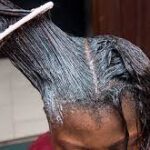In the past, the Hartbeespoort Dam in South Africa was teeming with visitors taking in the beautiful scenery and engaging in leisurely water activities. The boats are now stranded in a sea of invasive green water hyacinth weed, greeting the guests.
With sewage, industrial chemicals, heavy metals, and garbage flowing on rivers from Johannesburg and Pretoria, Harties, as Hartbeespoort is also known, have increased.
Professor Julie Coetzee, who has studied water hyacinths for more than 20 years and oversees the aquatic weeds program at the Centre for Biological Control at Rhodes University, stated that “In South Africa, we are dealing with much polluted waters.”
Due to its catastrophic effects on livelihoods, weed is a major issue for the surrounding population. The nutrients in the pollutants work as ideal fertilizers for the weed.
Dion Mostert, 53, is about to fire 25 employees from his recreational boat firm after his business was paralyzed by the water hyacinth carpet.
“There is no movement of the boats. It’s impacting tourism in our town, which in turn is affecting tourist jobs, Mostert remarked, pointing to his opulent cruise ship “Alba,” which was stranded in weeds.
He confesses that he has thought about employing herbicides, but they would only be a temporary solution to the issue.
But, by introducing the water hyacinth-eating beetle Megamelus scutellaris, scientists and locals have discovered a novel technique to combat the invasion.
The plants’ natural adversaries, the small phloem-feeding insects, are released in large numbers and are both native to South America’s Amazon basin.
By attacking the tissue that transfers nutrients made in the leaves during photosynthesis to the rest of the plant, the insects eliminate the weed.
According to Coetzee, the insect army has previously only managed to eradicate 5% of the water hyacinths on the dam. Sometimes the weed has at least 50% of it covered.
At the Grootvaly Blesbokspruit wetland conservancy southeast of Harties, where there used to be more than a hundred species of birds that drew a lot of tourists, environmentalist Patrick Ganda, 41, mass-raises the insects.
There are currently only two to three types of birds left, he claimed, due to their inability to find food like fish and small plants as a result of the wetland’s water being largely covered by vegetation.
The crisis has been largely under control thanks to insects, but scientists warn that more has to be done to address its root causes. To do this, authorities could tighten restrictions on wastewater management.
Scientist Kelby English from Rhodes University claims that “we are just treating the symptom of a much broader problem.”




















